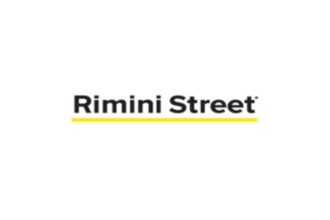Advertising has long been a staple method of customer acquisition for brands and businesses. Now, with the growing digital landscape giving way to more innovative channels for marketing and advertising, traditional mediums are quickly being replaced by online video ads, social media ads, and even voice search and audio. These days, it seems that interruptive advertising, privacy, and consumer data are big issues that are still playing out on a global scale.
Data has been a big part of marketing, allowing marketers to target customers with precision. A massive race for this ‘new oil’ is taking place, and corporate interest in the advanced technology used to determine how consumers behave has cast light on security and privacy risks, as well as regulatory changes and long-term effects.
A fraction of these issues stems from the growing demands of online marketing, instigated by a huge influx of business activity and pushed forward by greater access to advanced tech.
Demand for intrusive marketing tactics
Rauf Fadzillah – Co-founder of Palindrome Communications (SEO research and blog writing company based in Malaysia) – stated that an overwhelming increase in business and startup activity in specific regions of the world has led to a growing demand for marketing effectiveness.
“Startups in tech sectors including PropTech, Fintech, and EdTech appear to be growing with an influx of business activity that has led to heavy investor interest. It has also saturated many markets” said Rauf.
As a direct result of such developments, consumers have been targeted by interruptive advertising which often comprises unskippable video ads that interrupt the viewing experience on their favourite platforms or pop-ups that block out entire pages and deliberately keep close window buttons as small as possible. These elements take away from the enjoyment of content on platforms that consumers came to experience in the first place.
“In truth, consumers are growing tired of such conventional marketing and advertising approaches, and the surge of startups and businesses rising up through funding is creating a problem where consumers are constantly flooded with ads that are not always relevant or interesting,” said Khalid Fadzillah – second co-founder of Palindrome.
It’s important to note that not all advertising is completely interruptive, with scrollable Facebook ads and YouTube ads or website banner ads being prime examples of advertising without complete disruption of the experience. However, interruptive ads are being championed as the most effective types of ads to date, which leads more advertisers to flock to these methods, creating a vicious cycle.
Combined with various efforts to extract and retain as much data from consumers as possible, this leads to a potentially severe marketing problem – an intrusion on the consumer experience that can gradually build a claustrophobic online landscape where consumers are constantly barraged by corporations with no consideration of the long term effects. This can also give the entire field of advertising and marketing a bad reputation.
Essentially, market data was meant to serve marketers with precise ad campaigns while concurrently retaining relevance to consumer preferences. However, that justification might be falling apart in some areas, especially with privacy concerns surrounding major online platforms.
An organic content alternative
How do we fix this problem? There’s no easy answer. As mentioned, advertising options that are not completely interruptive can still offer leeway for platforms to monetize while retaining consumer experience (similar to the analogy of billboard highway ads that don’t block the road you’re driving on). At the same time, there are a lot of changes being made to how corporations utilize Big Data for marketing purposes with adjustments in third-party data landscapes and changes to how cookies are utilized online.
Aside from all this, organic marketing in the form of content creation that’s based around an inbound marketing strategy, might be the next best thing. A powerful alternative to disruptive marketing includes videos, podcasts, articles, and images – organically targeted towards a specific demographic. Blogs are essentially a combination of these media forms.
“People seem to be more open and responsive to brands that offer informative value and genuine engagement,” said Rauf.
“Many entrepreneurs and startup founders disregard their blogs altogether. Some don’t know the true potential of creating consistent blog content. Others aren’t putting enough time or effort into their blogs. By gradually building up your blog, you essentially get to reinforce your brand presence and ultimately empower your marketing arsenal.” he added.
Ultimately, some may see these organic marketing tactics as a step in the right direction, while others might agree but use them in interruptive ways. Data analytics, tools for market precision, and other advanced tech solutions are powerful, and possibly even necessary for business success in this era. However, more discussions about how we implement such initiatives within the market may be in order.











![[infographic]-the-6-best-social-networks-for-e-commerce-advertising](https://www.marketinginasia.com/wp-content/uploads/2022/06/24878-infographic-the-6-best-social-networks-for-e-commerce-advertising-150x150.png)




